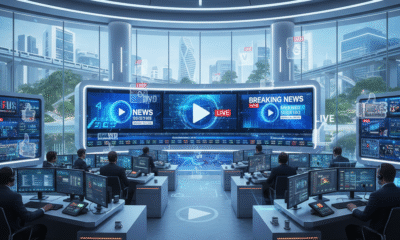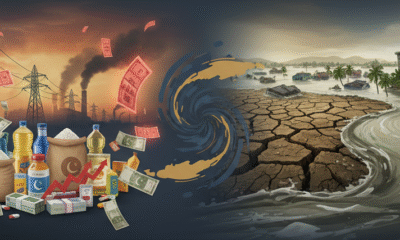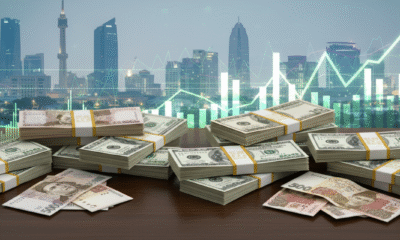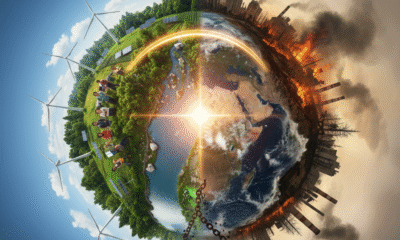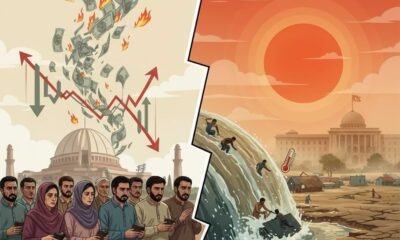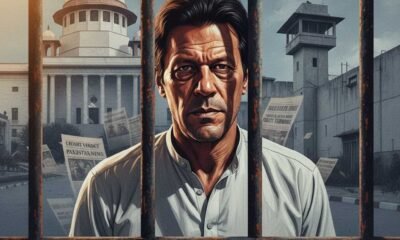Pakistan News
Is Pakistan a Poor Or Rich Country?
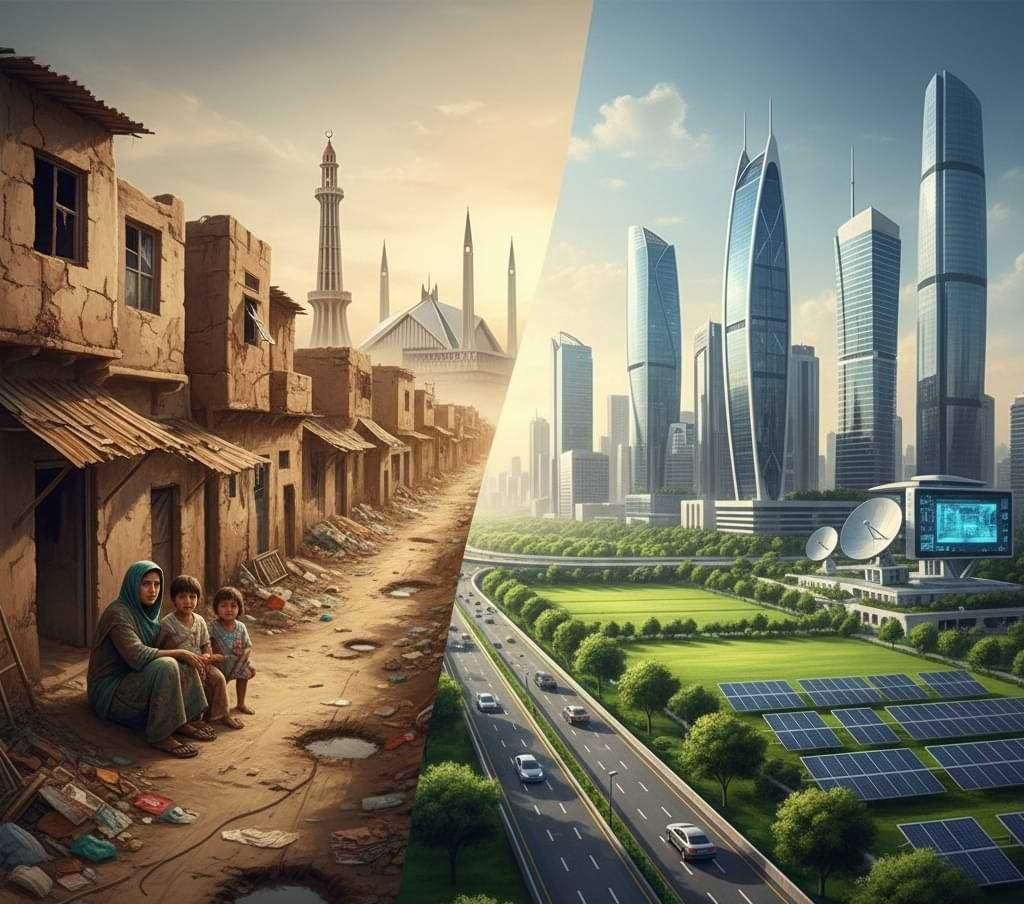
Introduction
Pakistan is often described through two contrasting lenses: some portray it as a poor country struggling with economic instability, while others argue that it is rich in natural resources, strategic location, and human capital. The truth lies somewhere in between, as Pakistan faces undeniable challenges but also possesses immense potential. In this article, we will explore both perspectives — poverty and wealth — to understand where Pakistan truly stands today.
Economic Landscape of Pakistan
Pakistan’s economy has always been a subject of global debate. As a developing country with a population of over 240 million, the nation has a mixed economic profile:
- GDP Status: Pakistan’s GDP places it among the top 50 economies in the world by size, yet per capita income is relatively low.
- Agriculture & Industry: Agriculture contributes significantly, with exports like rice, textiles, and sports goods. The industrial sector includes cement, steel, and technology startups showing growth.
- Foreign Exchange Reserves: Instability in reserves and currency depreciation highlight weak economic planning and reliance on external debt.
While economic indicators present Pakistan as struggling, the resources and opportunities suggest otherwise.
Richness in Natural Resources
Pakistan is naturally blessed with resources that could fuel long-term prosperity:
- Minerals: The Thar coal reserves are among the largest in the world, while Balochistan has significant deposits of gold, copper, and natural gas.
- Agricultural Land: With fertile land from the Indus River, Pakistan is self-sufficient in many crops and exports rice, mangoes, and wheat.
- Water & Hydropower: The rivers provide huge opportunities for hydroelectric power generation, though underutilized.
These untapped resources prove Pakistan is not poor in potential, but rather in management.
Poverty & Inequality Challenges
Despite abundant resources, poverty remains widespread:
- Income Disparity: A small elite controls wealth, while millions live below the poverty line.
- Unemployment: Youth unemployment and underemployment are high, leading to brain drain.
- Education & Health: Lack of quality education and healthcare widens inequality.
This paradox — richness in resources but poverty in living standards — creates the confusion about whether Pakistan is poor or rich.
Strategic Location Advantage
Pakistan’s geographical position between South Asia, Central Asia, and the Middle East makes it a natural trade hub. The China-Pakistan Economic Corridor (CPEC) highlights its strategic importance. Gwadar Port, once fully developed, could transform Pakistan into a global trade route. Such opportunities make Pakistan geopolitically rich.
The Role of Human Capital
Pakistan’s population is its biggest strength and weakness:
- Strength: Over 60% of the population is under 30, making it one of the youngest nations. This youthful energy can fuel innovation and entrepreneurship.
- Weakness: Without proper education and job creation, this demographic can add to poverty and social unrest.
Investment in human capital can transform Pakistan from being “poor” to “rich.”
Foreign Remittances – A Hidden Wealth
Millions of Pakistanis work abroad, particularly in the Middle East, Europe, and North America. Their remittances contribute billions of dollars annually, sustaining families and stabilizing the economy. This wealth inflow is a critical lifeline that prevents the economy from collapsing.
Political & Governance Issues
Poor governance is often cited as the main reason Pakistan cannot unlock its wealth:
- Corruption drains resources.
- Policy inconsistency discourages investors.
- Instability makes long-term projects difficult.
Thus, while Pakistan is rich in potential, it appears poor in outcomes due to mismanagement.
Global Perception vs Reality
International media often categorizes Pakistan as “poor” due to debt crises, IMF loans, and inflation. However, Chal Pakistan often shows stories of thriving industries, growing tech startups, and successful entrepreneurs. This duality highlights the gap between perception and reality.
Rich in Culture & Heritage
Beyond material wealth, Pakistan is rich in culture, history, and traditions. From Mohenjo-daro to Lahore Fort, and from Sufi shrines to vibrant festivals, Pakistan has treasures that make it one of the culturally wealthiest nations in the region.
Conclusion
So, is Pakistan poor or rich? The answer is: both. Pakistan is poor in terms of income distribution, governance, and social services. Yet, it is undeniably rich in natural resources, human capital, culture, and strategic opportunities. With visionary leadership and structural reforms, Pakistan has the potential to shift from survival mode to prosperity.
FAQs
1. Is Pakistan considered a poor country internationally?
Yes, due to debt, inflation, and poverty rates, it is often labeled poor, though this ignores its vast resources.
2. What natural resources make Pakistan rich?
Coal, copper, gold, natural gas, fertile land, and water resources.
3. Why does poverty exist despite these resources?
Corruption, poor governance, and lack of proper planning.
4. What role does CPEC play in Pakistan’s wealth?
CPEC could turn Pakistan into a regional trade hub, boosting the economy.
5. How do remittances affect Pakistan’s economy?
They provide billions annually, stabilizing the economy and supporting families.
6. Is Pakistan’s youth a strength or weakness?
It’s both — with proper investment in education, it’s a strength; without it, a weakness.
7. What industries highlight Pakistan’s wealth?
Textiles, sports goods, agriculture, IT startups, and construction.
8. How does culture contribute to Pakistan’s richness?
Heritage sites, festivals, and traditions enrich its identity beyond economics.
9. What does Chal Pakistan News reveal about the economy?
It often showcases growth stories in startups, industries, and social progress.
10. Can Pakistan become a rich country in the future?
Yes, with reforms in governance, education, and infrastructure, Pakistan can transform its potential into reality.



